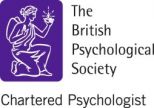Our Therapeutic Model
The DART Framework
Step-a-Side uses the ‘Developmentally Informed Attachment, Risk and Trauma’ (DART) framework to guide their work. This model recognises the complexity, vulnerability and high risk behaviours of many of the children and adults we support. At its core is the recognition of the importance of attachment and the effect of its disruption in early years, alongside an understanding of the effect of trauma on child and adult development.
An individual’s development of high risk behaviours are assessed within this context, informed by psychological formulation, to devise therapeutic support plans and individual psychological input where necessary. We believe that therapeutic intervention begins when the person first enters the home, through the provision of a secure and stable base with predictable routines and staff who are attuned to individual needs and who have an understanding of the person. Key to this is the use of a low arousal approach to de-escalate and avoid behaviours occurring.
We recognise that our staff and their emotional well-being are crucial in providing placement stability and provide training to promote their understanding of the complex people we support.
Our Principles
- Children are born without the ability to regulate their emotions. Our young people and adults often do not have the chance to acquire these skills in childhood for a variety of reasons.
- Insecure attachment and early trauma affect brain development and can cause significant impairment in structure and form.
- All young people need to be understood as individuals within the context of their life experiences.
- Staffs’ role is to support young people as ‘therapeutic parents’.
- The emotional well-being of staff is an essential ingredient in supporting our young people and adults.
- Safety is the major principle at all times, including risk to young people, staff and the general public. Understanding risk through robust risk assessments and plans is essential.
- High risk behaviours often mask true needs.
- Homes are regarded as primary therapeutic environments. Additional therapeutic input is informed by clear psychological formulations.
- Intervention begins on admission, when the young person walks through the door.
- Continuity is a major factor in establishing good therapeutic outcomes. This includes in placement, relationships and approaches.
Overall Service Aims
- Reduce the severity of high risk behaviours and promote safety
- To raise staff understanding of complex people
- To facilitate the development of emotional regulation and to use this
- To promote positive relationships
- To reduce placement moves
- To identify those young people at risk of developing mental health difficulties
- An approach that encourages young people to develop and progress
- To prepare, where possible, young people for a return to a family environment.
DGF Psychology
Step-a-Side works alongside an independent company called DGF Psychology, who offer psychological input and consultancy to children and adults with emotional needs, challenging and offending behaviours, their families, carers, and staff.
DGF Psychology provide a holistic therapeutic service for Step-a-Side, including referral assessments, preliminary psychology assessments, individual and group therapeutic work and therapeutic behaviour support plans.


Click the links below to find out more about our Therapeutic Model: